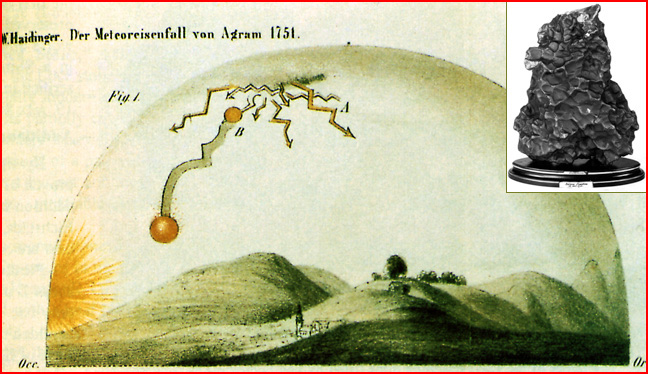|
|
||
 |
||
|
pic of the day Links:
Society for
|
Nov 19, 2004 There have been many reputable eyewitness reports of unusual electrical activity associated with very bright meteors. At about 6 p.m. on 26 May 1751, two enormous iron meteorites landed at Hraschina, near Zagreb in Croatia. The spectacular display, now called the phenomena of Agram (Zagreb), was painted by a witness from Szigetvar, 15 miles south east of Hraschina. It depicts a high cloud with lightning flashes (A) and a fireball (B) bursting into two balls linked by a corkscrewing fiery chain. The electrical model expects this kind of behavior. The lightning discharges caused the disruption of the meteor. The connection of the resulting two bolides by "intertwined fiery chains" is evidence for a continuing powerful discharge between them. Before an intruder can hit the Earth, lightning will always be unleashed. The blackened pits on meteorites (see inset of the Agram Meteorite on display at the Natural History Museum of Vienna) are electrical craters. The lightning hypothesis explains many long-standing mysteries about impacts of all sizes: why meteors can sometimes be heard at the same time they are seen; why the Tunguska event of 1908 left no meteoritic remains; why the 88 ton Hoba meteorite (the size of a family car) didn't form a crater at all; and why the spectacular collision of comet Shoemaker-Levy-9 with Jupiter produced flashes much earlier and bigger than expected. |
|
|
Copyright 2004: thunderbolts.info |
||
